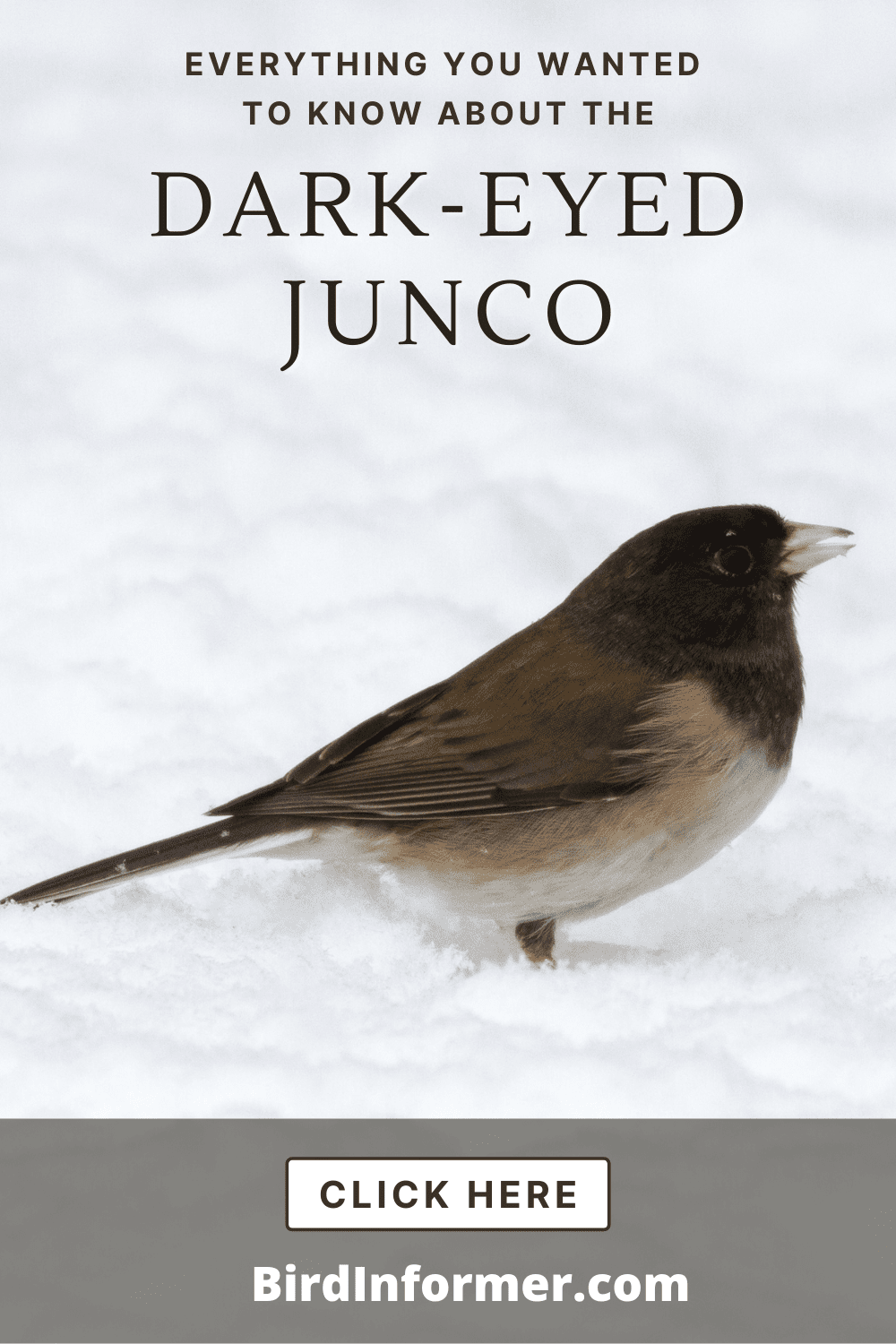Contents [show]
The Dark-eyed Junco is a lovely bird that is a close relative to the sparrows. They are widespread across North America and are divided into five major groups – each with different color patterns. They are known to be snowbirds as they usually arrive during winter, and you’ll quickly recognize them from their bright and flashy-colored body and bright, white tail.
In this article, we are going to cover a wide variety of topics related to the Dark-eyed Junco, such as:
- How to identify them
- How, when, and where they migrate
- Their diet
- How and where they nest
- And much more…
So, without any more delay…
Let’s jump right into it and learn more about the Dark-eyed Junco.
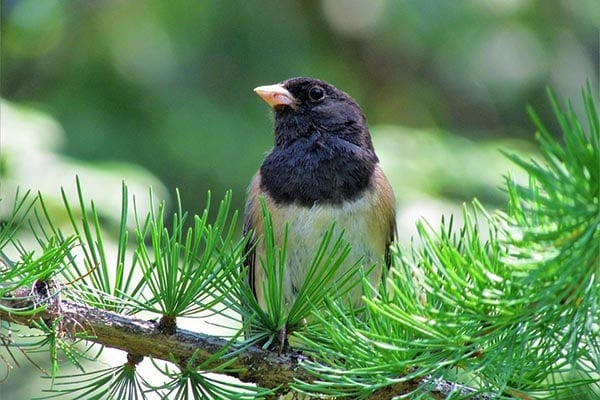
Dark-eyed junco facts
- Common Name: Dark-eyed Junco
- Scientific Name: Junco hyemalis
- Scientific Family: Passerellidae
- Life Span: 11.3 years
- Size: 5.5 to 6.3 inches
- Wingspan: 7.1 to 9.8 inches
- Weight: 0.6 to 1.1 oz
- Conservation status: Least Concern (LC)
Dark-eyed junco: how-to identify
Dark-eyed Juncos are medium-sized sparrows that feature rounded heads, shorts bills, and long tails. As the name implies, the biggest noticeable feature of these birds is their black eyes. There were originally five separate species of the dark-eyed Junco, each of different forms:
- The white-winged junco features a medium-gray head and upper body, a white belly, and white wing bars.
- The Oregon junco features a dark gray head and chest, brown back, brown wings, and a white belly.
- The slate-colored junco features a dark gray head and body and a white belly.
- The pink-sided junco has a medium-gray head and chest area, brown back, brown wings, and a white belly.
- The gray-headed junco is a medium gray color overall, where the belly part is the palest part, a rusty belly, and a dark upper mandible.
Differences Between Male & Female
There’s no significant difference between a male and female Dark-eyed Junco. However, it has been noted that female Oregon juncos are a bit dull in color than the males and the female slate-colored junco are a lot browner than the males.
Differences In Summer Plumage vs Winter Plumage
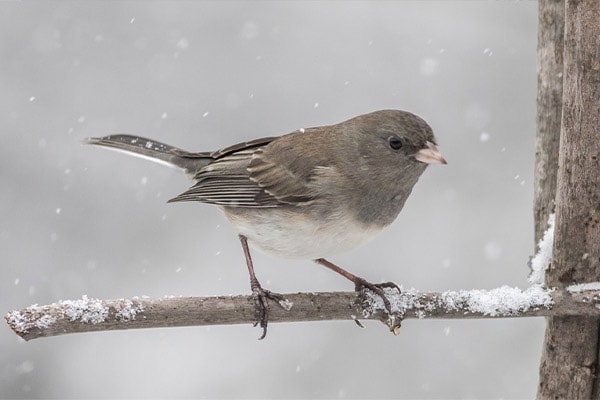
Dark-eyed Junco doesn’t also show any difference in plumage between the summer and winter seasons. It has also been observed that the birds appear puffier in winter.
Dark-eyed junco bird vocalization
Where You’ll See A Dark-eyed Junco
Dark-eyed Juncos are found across North America. Depending on the group, these birds breed in various areas:
- White-winged: Black Hills region
- Slate-colored: East of the Rockies
- Oregon: West Coast, north to southern Alaska, east to central Nevada, and western Montana
- Pink-sided: Northern of the Rockies
- Gray-headed: Nevada, Utah, Colorado, south to central Arizona, and western Texas
These birds are very widespread. They are mainly found in forests, coniferous and deciduous, and at high elevations of up to more than 11,000 feet. During winter, the birds can also be found in open fields, parks, gardens, and even roadsides.
Dark-eyed junco bird migration
Dark-eyed Juncos are considered a resident or medium-distance migratory birds. All northern populations, particularly those in Canada and Alaska, migrate to the south in winter. Birds found in the Rocky mountains migrate only short distances, while other Eastern and Western populations don’t leave.
Migrations usually start in October and March or April. They also usually travel in flocks and at night.
Dark-eyed junco diet
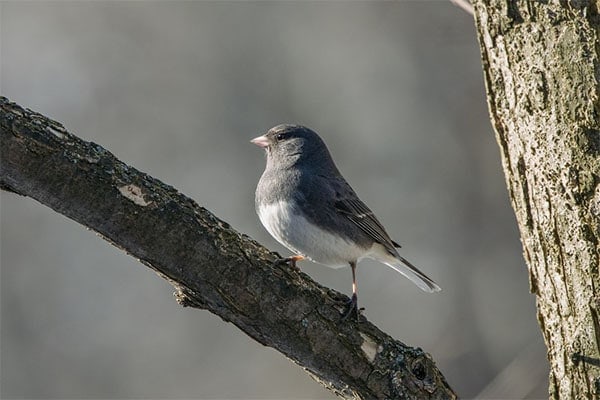
Dark-eyed Juncos eat a lot of seeds as it makes up 75% of their yearly diet. Among their favorite are chickweed, buckwheat, sorrel, and other seeds from weeds and grasses. Sometimes they also eat berries. You’ll see these birds eat insects during the breeding season. It usually includes caterpillars, beetles, spiders, ants, and more.
These birds tend to hop and run on the ground while searching for food. Sometimes they scratch snow and leaf-litter to find food under. When visiting bird feeders, they also typically forage on the ground rather than visiting hanging bird feeders.
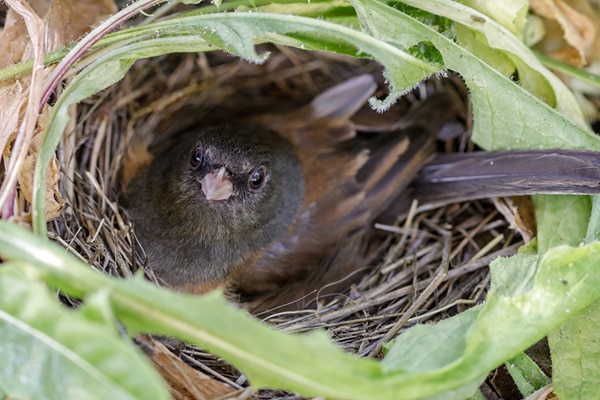
Dark-eyed junco nesting
- Clutch Size: 3-6 eggs
- # of Broods: 1-3 broods
- Incubation Period: 12-13 days
- Nestling Period: 10-13 days
- Egg Description: White, gray, pale bluish white, or pale-greenish white speckled with brown, gray, and green. Occasionally unmarked.
It’s the female Dark-eyed Juncos that chooses a nest site. Unlike most birds who prefer to be high up on the ground, these birds prefer to stay low. So, they love staying on the ground but well-hidden areas such as exposed roots, under a log, or rocks.
On rare occasions, the birds also stay above ground but not as high as 45 feet. You can see them on branches of the tree and sometimes on man-made structures like window sills or old hanging pots.
It’s also the females who build the nest. If the birds opt to stay on the ground, the nest is usually just an open cup made of grass, weeds, leaves, and feathers. If they opt to go higher, they make it more sturdy by using twigs, leaves, and moss as the foundation, then lining it with fine grasses, hair, rootlets, and ferns.
Dark-eyed junco behavior
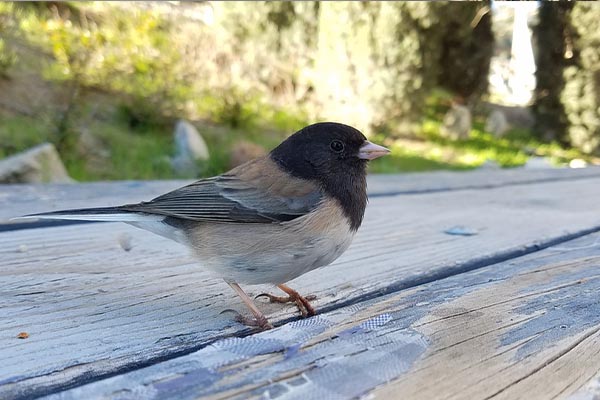
Dark-eyed Juncos look for food on the ground, pecking or scratching lead litter. You’ll usually find them hopping or walking in small social groups but rarely runs unless they chase something. They also sometimes fly up if they spot insects on tree trunks.
Like many other birds, they are social during the autumn and winter seasons. Unlike many other bird species, these birds are known to spend their winter in the same area every year. There is also hierarchy during winter, where males dominate over females and adults dominate younger birds.
This limits the females’ access to food, so they migrate farther south while the males stay on the breeding grounds north where they encounter harsher weather conditions. This is also when aggressiveness shows as their way to claim territories.
How-to attract dark-eyed juncos
Dark-eyed Juncos are fun to watch. And no matter what group of these birds is found in your area, attracting them is pretty much the same. You just always need to make sure to provide everything the bird will need.
So, for food, set up some bird feeders around your backyard. Aside from purchasing the hanging ones, buy ground-feeding bird feeders or open trays. Then, place some millet, sunflower seeds, or cracked corn inside. Or you can also just scatter the seeds on the ground.
These birds usually appear in winter, so it’s also best to place the feeder somewhere covered. You can also then plant some seed-bearing grasses and flowers to attract more of these birds.
Plant some shrubs and coniferous trees to serve as these birds’ shelter. And if you want them to build some nests, then provide nesting materials that they can find around your backyard.
Don’t forget to provide an adequate supply of water, too. So, add a heated bath for birds, especially since these birds visit in cold weather. And just like with bird feeders, birdbaths should be low on the ground too.
Dark-eyed junco threats
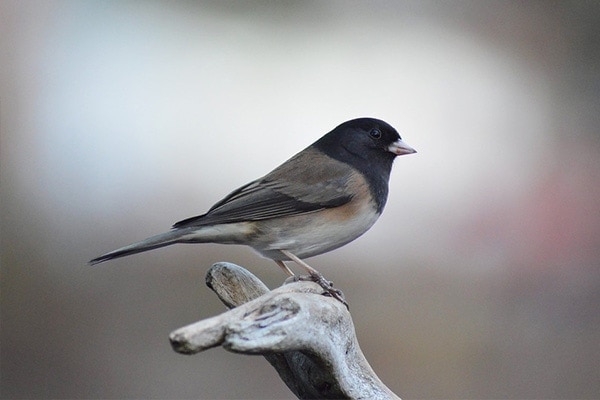
Dark-eyed Juncos are high in numbers. However, since they love staying in open areas, they are oftentimes attacked by different bird predators like hawks and owls. Adult Dark-eyed Juncos are sometimes killed by cats, while squirrels, weasels, and chipmunks target eggs and nestlings.
Dark-eyed junco fun & interesting facts
- Dark-eyed Juncos are also called “snowbirds”.
- These birds have five major groups, each of different color patterns.
- To alarm members of the flock, a Dark-eyed Junco flashes their white tail to signify danger.
- The oldest Dark-eyed Junco recorded was 11 years and four months old.
- They are one of North America’s most recognized birds.
- Rufous-winged Sparrow
- Botteri’s Sparrow
- Cassin’s Sparrow
- Bachman’s Sparrow
- Grasshopper Sparrow
- Olive Sparrow
- Chipping Sparrow
- Clay-colored Sparrow
- Black-chinned Sparrow
- Field Sparrow
- Brewer’s Sparrow
- Black-throated Sparrow
- Lark Sparrow
- Lark Bunting
- American Tree Sparrow
- Fox Sparrow
- Yellow-eyed Junco
- Golden-crowned Sparrow
- White-crowned Sparrow
- Harris’s Sparrow
- White-throated Sparrow
- Sagebrush Sparrow

